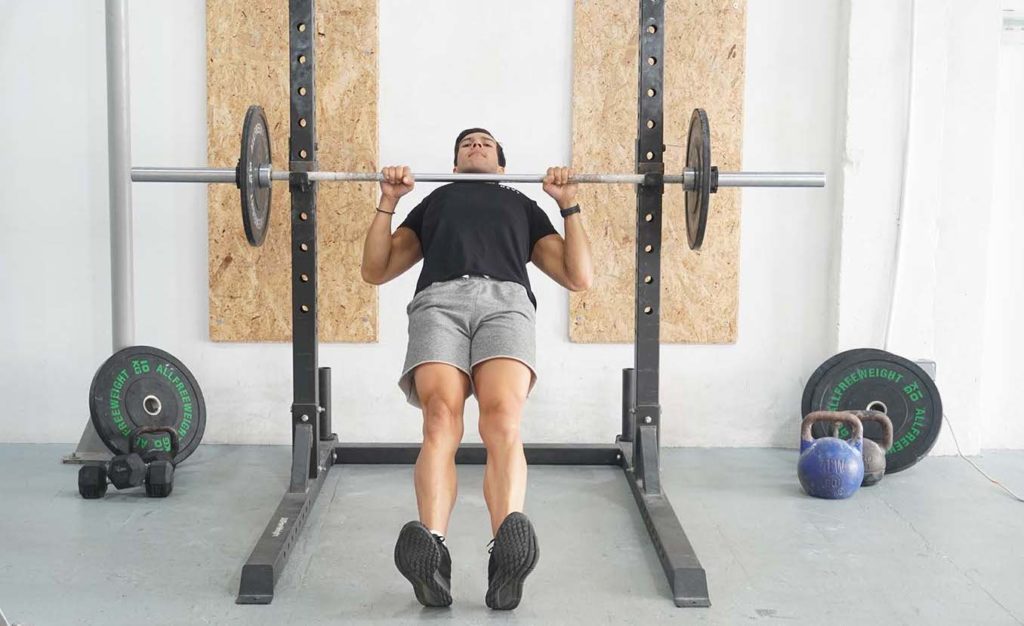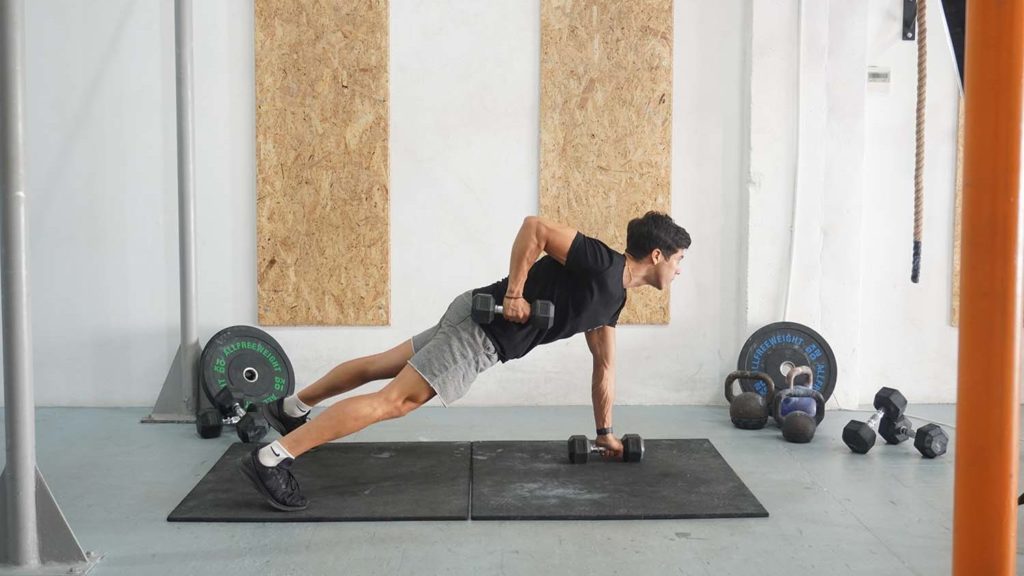Benefits of the Cable Lat Pulldown on Back Muscle Development
The cable lat pulldown is an effective accessory exercise that develops your lats, rear deltoids, biceps, and forearms. Similar to pull-ups, lat pulldowns train the same muscles through a similar range of motion. The only difference is, using a lat pulldown machine allows you to adjust the load based on your strength. As a result, you can vary the intensity, maintain proper technique, and develop your strength.
Thanks to the movement pattern, lat pulldowns emphasize our latissimus dorsi, the largest muscle in the upper body. Developing the lats is vital for back width, upper body strength, and athleticism. The lats contribute to numerous arm movements, including shoulder extension and arm adduction.
We recommend including the cable lat pulldown near the middle of your pull workout. As an accessory exercise, lat pulldowns allow you to emphasize your lats in various intensity zones.
How to do a Cable Lat Pulldown
- Adjust the knee pad on the machine to be right against your thighs without placing too much pressure on them.
- Adjust the pin to a weight you can comfortably lift for at least ten good repetitions.
- Stand up, and grab the handle with a slightly wider than shoulder-width overhand grip.
- Sit down and secure your legs underneath the pad.
- With your arms extended and holding the handle firmly, bring your shoulders back and down.
- Take a breath and pull the weight down through your elbows. Think of your hands as mere hooks for the weight – this will help with back activation.
- As you pull the weight down, make sure that your elbows remain tucked in and in line with your torso; avoid having them flare out and back behind your body.
- Pull the weight to your upper chest, hold the contraction for a moment and, as you exhale, extend your arms until your elbows are straight.
What muscles does the cable lat pulldown activate?
The primary muscles that work during a lat pulldown are our latissimus dorsi (1). Our lats cover a large percentage of the back and are the largest and most powerful muscle in the upper body. The lats activate and produce arm adduction and shoulder extension as we pull the weight down (2).
Other back muscles, including the rhomboids, trapezius, infraspinatus, erector spinae, and rear deltoids, contribute to lat pulldowns. The muscles keep our shoulder blades retracted and assist the lats in pulling the weight.
The second pair of muscles involved in lat pulldowns are the biceps, which cover our upper arms’ front side and produce elbow flexion (bending) (1, 3). As we pull the weight, the biceps flex our elbows, assisting the back in completing each repetition.
Our abs, transverse abdominis, and obliques also contribute to lat pulldowns, providing torso stability.
Tips on Proper Form when Performing a Cable Lat Pulldown
The first tip to keep in mind is to lean your torso back slightly. In doing so, you can pull the weight to your upper chest and engage your back musculature effectively. Avoid leaning too far back or having your torso too upright.
Using a full range of motion is also essential for an effective lat pulldown. You should pull the bar to your upper chest, hold for a moment, and release it until your arms extend fully. A full range of motion allows you to shorten and stretch all involved muscles more effectively, causing a robust hypertrophic response.
Securing your thighs underneath the pulldown machine’s pad is the third tip to keep in mind. The goal is to have your thighs fit snugly but not to the point where you feel pressure. Doing so is vital for preventing excessive body movement during the exercise. Leaving too much room between your thighs and the pad can cause you to rise as you extend your arms, reducing the tension on your back muscles.
Variations and Modifications of the Cable Lat Pulldown
1. Single-Arm Cable Lat Pulldown

The single-arm cable lat pulldown is an excellent alternative that offers many benefits. You train your back and biceps through a significant range of motion, and the overloading potential is great. Plus, training one side at a time can be beneficial for improving your mind-muscle connection for superior muscle activation.
2. Resistance Band Lat Pulldown
Resistance bands offer an effective alternative for lat pulldowns if you don’t have access to a gym machine. All you have to do is attach the band somewhere overhead, grab it, and pull it down like you would on a machine.
3. Underhand Lat Pulldown
The underhand lat pulldown is a variation where you grab the bar with your palms facing back, similar to a chin-up. Doing so is beneficial for engaging your biceps more effectively and training your back muscles with slightly more weight. Plus, some people form a mind-muscle connection more effectively using the underhand grip variation.
Mistakes to Avoid
The most common mistake to avoid with lat pulldowns is using too much weight. Doing so makes the exercise less effective because you have to shorten the range of motion and use momentum to complete repetitions. Instead, begin with a load that allows you at least ten to twelve complete repetitions.
Another common mistake with lat pulldowns is leaning back too much. Some trainees lean back so far that lat pulldowns resemble inverted rows. The goal is to lean back but only slightly, allowing you to train with a full range of motion. Anything beyond that shifts the emphasis to mid-back musculature, defeating the exercise’s purpose.
The third common mistake to watch out for is not retracting your shoulder blades. Doing so is wrong because it emphasizes your shoulders and prevents you from engaging your back muscles. Fix the mistake by bringing your shoulders back and down before each set and keeping them in position until you finish.
Similar Exercises to the Cable Lat Pulldown
Inverted Row

Inverted rows are a bodyweight exercise that strengthens your midsection, upper back, biceps, and forearms (4). The objective is to grab a bar and lean back as you keep your feet on the ground. Once in position, engage your abs, bring your shoulders back, and pull yourself to the bar. A more horizontal body position makes the exercise more challenging, whereas being more upright makes the exercise beginner-friendly.
Renegade Row

Renegade rows are among the more functional exercises you can do for back growth. The goal is to assume a push-up position while holding a pair of dumbbells or kettlebells. You then tilt to one side and pull the opposite dumbbell to your torso. Doing so strengthens your lats and biceps while also improving whole-body stability.
T Bar Row
Like classic barbell rows, the T bar row is a variation where you bend forward, brace your core, and pull the weight to your upper stomach. Doing so strengthens a range of muscles, including your entire back, abs, shoulders, biceps, and forearms.

